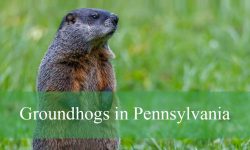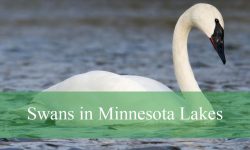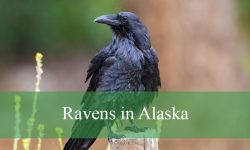As twilight falls across Colorado’s wide skies and rugged mountains, silence overtakes the pines. Then, from the shadowed edge of a meadow, a deep hoot echoes through the air — slow, powerful, and commanding. The sound travels across valleys and ridges, fading into the night. These haunting calls belong to the owls in Colorado, nature’s silent predators and mysterious watchers of the dark.
To the casual observer, owls might seem identical — ghostly shapes that vanish before sunrise. But in Colorado, they represent one of the state’s most diverse and fascinating bird groups. From tiny burrow dwellers of the plains to the enormous great horned owl ruling the high Rockies, each species carries its own secrets.
In this article, we reveal the surprising truths about Colorado’s owls — their habits, habitats, intelligence, and ecological importance. What you’ll learn about these nocturnal hunters may change the way you look at the Colorado night forever.
The Owls of Colorado: Nature’s Silent Hunters
A Land of Many Habitats
Colorado’s geography is among the most varied in the United States — soaring peaks, open grasslands, dry mesas, and lush mountain forests. This diversity makes the state a perfect home for at least 13 species of owls, each adapted to a unique environment.
You might hear a great horned owl booming through a canyon, see a burrowing owl standing alert beside a prairie dog hole, or catch the ghostly silhouette of a barn owl gliding silently over farmland.
From the Great Plains in the east to alpine forests above 10,000 feet, owls in Colorado thrive in nearly every ecosystem — a testament to their adaptability and resilience.
The Most Common Owls in Colorado

-
Great Horned Owl (Bubo virginianus) — The largest and most widespread, known for its deep “hoo-hoo” calls and fierce presence.
-
Barn Owl (Tyto alba) — Recognized by its heart-shaped face and eerie screech, it hunts silently over open fields.
-
Burrowing Owl (Athene cunicularia) — Small, long-legged, and active by day, found in grasslands and agricultural areas.
-
Western Screech Owl (Megascops kennicottii) — A compact woodland species with a soft trill call.
-
Northern Saw-whet Owl (Aegolius acadicus) — Tiny and elusive, it lives in dense forests.
-
Long-eared and Short-eared Owls — Seasonal visitors that migrate through Colorado’s plains and foothills.
-
Snowy Owl (Bubo scandiacus) — A rare winter guest from the Arctic, sometimes seen during irruption years.
Each of these species contributes uniquely to Colorado’s natural balance — predator, protector, and symbol of the wilderness night.
Anatomy of a Perfect Predator
Vision Built for Darkness
Owls’ forward-facing eyes grant them binocular vision, allowing precise depth perception essential for hunting in near-total darkness. Their retinas are packed with light-sensitive rods — up to 100 times more than humans — making night vision exceptional.
However, their eyes are fixed in place. To compensate, owls rotate their heads up to 270 degrees in either direction using specialized vertebrae and blood vessel systems that prevent injury or blockage.
This eerie ability allows owls in Colorado to survey their surroundings silently — a ghostly presence scanning the landscape beneath starlit skies.
Silent Flight: The Art of Stealth
One of nature’s greatest engineering feats lies in an owl’s wings. Their feathers have serrated edges that break air turbulence into tiny streams, eliminating flight noise. The result is complete silence — allowing them to strike prey without warning.
As they glide over Colorado’s grasslands or mountain forests, their prey — mice, voles, rabbits, and insects — have no chance to hear them coming. The silence of an owl’s wings is more than stealth; it’s survival perfected.
Hearing That Sees in the Dark
While humans rely on sight, owls rely equally on hearing. Their asymmetrical ear openings let them pinpoint sound with extraordinary accuracy.
When snow covers the ground, owls in Colorado can locate prey entirely by sound, detecting the faintest movement beneath layers of snow. This adaptation is vital in winter, when vision alone isn’t enough.
Their faces, shaped like radar dishes, funnel sound toward their ears — a design so advanced that engineers study owl hearing to improve acoustic technology.
Behavior and Daily Life
Solitary and Secretive
Owls are primarily solitary, defending territories that may stretch several square miles. During the day, they rest in hidden perches — tree hollows, rocky outcrops, or abandoned barns — blending perfectly with their surroundings.
Their camouflage isn’t just visual; even their posture mimics branches or tree bark. Unless they move or blink, they’re nearly invisible — which explains why owls in Colorado often go unseen even by locals living near them for years.
The Hunter’s Schedule
Most owls hunt at dusk and dawn, though species like the burrowing owl are active during daylight hours. They rely on stealth, patience, and acute senses rather than pursuit.
An owl’s kill is swift. Once spotted, prey is grasped by razor-sharp talons with a force equal to its own body weight. A single great horned owl can take down animals larger than itself — even skunks or young rabbits.
This power, combined with silence, makes owls the ultimate nocturnal hunters of the Rockies.
Species Spotlight: Colorado’s Most Remarkable Owls
Great Horned Owl: The Apex Predator
The great horned owl reigns as Colorado’s dominant bird of prey after dark. Its horn-like tufts are not ears but visual tools — helping with camouflage and intimidation.
These owls adapt to every habitat, from city parks to mountain cliffs. Their deep calls echo through canyons, marking territories that can span miles.
They’re fearless hunters, known to attack porcupines, skunks, and even other raptors. Their strength and aggression have earned them the nickname “tiger of the sky.”
Barn Owl: The Ghost of the Plains
Few creatures are as hauntingly beautiful as the barn owl. With its heart-shaped white face and spectral wings, it glides silently through Colorado’s farmlands, hunting rodents that damage crops.
It prefers old barns, silos, and cliffs as nesting sites, often living near human settlements. Their eerie screeches — not hoots — once fueled ghost stories among early settlers.
Ironically, barn owls in Colorado are farmers’ best friends, consuming thousands of mice and voles yearly, reducing the need for pesticides.
Burrowing Owl: The Daytime Sentinel
Unlike its nocturnal cousins, the burrowing owl thrives under daylight. Found in eastern Colorado’s grasslands, it nests in abandoned prairie dog burrows, standing upright like sentinels.
These owls are playful and curious, often bobbing their heads or performing aerial displays. They feed on insects, small rodents, and even reptiles.
But their greatest challenge is habitat loss — as grasslands shrink, burrowing owls in Colorado are becoming less common, relying heavily on conservation programs to survive.
Northern Saw-whet Owl: The Hidden Gem
Tiny yet fierce, the northern saw-whet owl is one of Colorado’s smallest residents. About the size of a soda can, it hides in dense conifers and rarely shows itself during the day.
Named for its call, which sounds like the sharpening of a saw, this owl preys on mice and insects. Spotting one in the wild is a rare delight — proof that even the smallest predators hold their own in Colorado’s rugged ecosystems.
Reproduction and Family Life
Courtship and Nesting
In late winter, as snow begins to melt, owls in Colorado begin their mating rituals. Males perform aerial displays, hooting to attract females and offering prey as gifts.
Once paired, they nest in tree hollows, cliffs, or abandoned nests of other birds. Barn owls may even use haylofts or church steeples. Females lay 3–6 eggs, incubating them for about a month while the male provides food.
Raising the Young
Owlets hatch blind and helpless, covered in soft down. Within weeks, they grow rapidly, demanding constant feeding. Parents hunt tirelessly, delivering rodents and insects night after night.
By six to eight weeks, the young begin to fledge — first hopping between branches, then gliding clumsily before mastering flight. By late summer, they disperse, each finding a new corner of Colorado to claim as its own.
Owls and Colorado’s Ecosystems
Guardians of Balance
Owls are vital to Colorado’s ecological balance. As apex predators, they control rodent populations, preventing crop damage and disease spread.
A single barn owl family can consume over 3,000 rodents per year — an invaluable natural pest control system. In forests, great horned owls regulate rabbits and small mammals, maintaining a healthy predator-prey dynamic.
Without owls, ecosystems would tilt toward imbalance — a reminder that beauty in nature often hides practicality.
Habitat Challenges
Urbanization, deforestation, and loss of open fields have reduced nesting sites for owls in Colorado. Rodenticides — poisons used to kill mice and rats — also pose severe risks. Owls that consume poisoned prey often die themselves.
Conservation groups now promote “owl-friendly” farming practices, including nesting boxes and poison-free pest control. These efforts ensure that future generations will still hear the haunting call of the owl across Colorado’s wilderness.
Cultural Symbolism and Human Connection
Owls in Native American Beliefs
For many Native American tribes of the Southwest and Plains, owls represent mystery, wisdom, and transformation. Among the Ute and Arapaho peoples of Colorado, the owl is a messenger — a symbol of foresight and deep intuition.
While some traditions link owls with warnings or omens, others see them as guardians between worlds, protecting the living from unseen spirits.
Even today, hearing an owl’s call in the Colorado wilderness stirs ancient emotions — awe, curiosity, and respect.
Modern Fascination
From photographers to hikers, owls in Colorado captivate everyone who encounters them. Wildlife centers and sanctuaries offer night walks and educational programs, teaching how these birds hunt, see, and survive.
Social media has even sparked a new wave of “owl tourism,” with people traveling across the state hoping to glimpse a snowy owl or burrowing owl in the wild.
Their magnetism lies in their contradictions — silent yet powerful, still yet fierce, familiar yet otherworldly.
Shocking and Little-Known Facts About Owls in Colorado
-
Owls can rotate their heads 270 degrees without cutting off blood flow.
-
A barn owl can hear a mouse moving beneath snow from 75 feet away.
-
Great horned owls don’t build their own nests — they steal those of other birds.
-
The burrowing owl often decorates its nest with animal dung to attract insects.
-
Owl feathers are so soft they absorb up to 80% of flight noise.
-
A single owl can eat its weight in food every week.
-
Owls in Colorado hunt during snowstorms using only sound.
-
Their eyes weigh more than their brains — optimized for vision over intellect.
-
Owls can see ultraviolet light, invisible to humans.
-
Fossils show that owls have existed for over 60 million years — older than most modern mammals.
FAQs About Owls in Colorado
How many owl species live in Colorado?
At least 13 species, ranging from tiny saw-whet owls to large great horned owls.
Where can I see owls in Colorado?
Rocky Mountain National Park, Pawnee National Grassland, and open farmland at dusk are prime locations.
Are owls active in winter?
Yes. Most remain year-round, though snowy owls visit only in rare cold winters.
What do owls eat?
Rodents, rabbits, insects, snakes, and sometimes small birds — depending on the species.
Are owls endangered in Colorado?
Most are stable, but burrowing owls and spotted owls face habitat threats.
Do owls migrate?
Some species migrate short distances for food; others, like great horned owls, stay put all year.
Are owls dangerous to humans or pets?
Not usually, though large species may defend nests aggressively if approached.
Can I attract owls to my property?
Yes — install nesting boxes, avoid pesticides, and maintain native vegetation.
Do owls mate for life?
Many species, such as barn owls, often form long-term pair bonds.
Why are owls considered wise?
Their calm demeanor, nocturnal habits, and keen observation inspired ancient symbolism linking them to wisdom and mystery.
Final Thoughts
The owls of Colorado are more than symbols of the night — they are living proof of nature’s perfection. From the whisper of their wings to the brilliance of their eyes, they embody stealth, intelligence, and balance.
They are guardians of the prairie and shadowy spirits of the forest, silently maintaining equilibrium in the ecosystems they call home. Their presence enriches the wild heart of Colorado, reminding us that wisdom often hides in silence and that every shadow may hold a story worth hearing.
The truth about owls in Colorado is simple: they’re not just birds of the night — they’re keepers of nature’s rhythm, unseen yet ever present, shaping the land one silent flight at a time.






